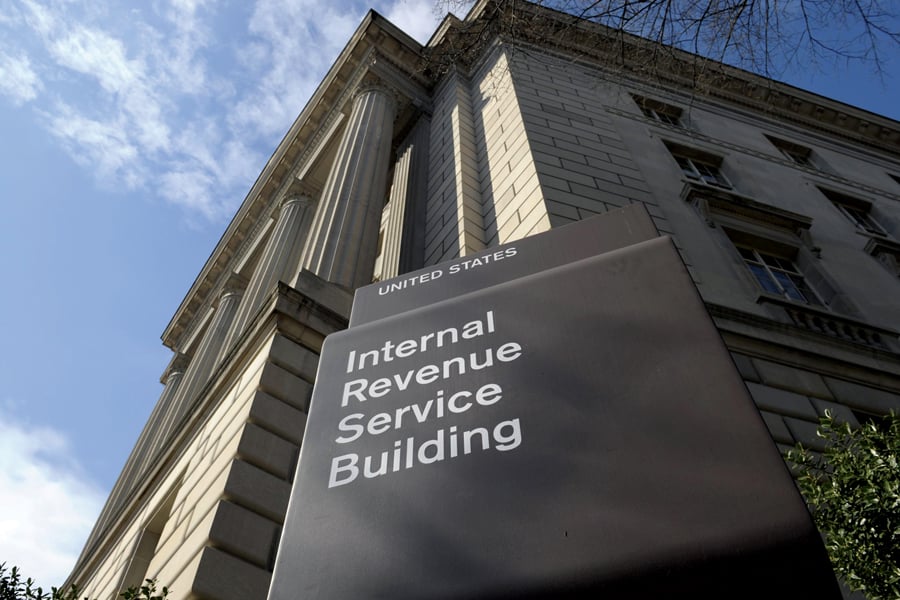

Here we go again. The 10-year-rule saga continues, and it is still not over.
The issue involves the 10-year rule that most non-spouse designated beneficiaries (like adult children or grandchildren, and certain qualifying trusts) who inherit individual retirement accounts will be subject to under the SECURE Act. It was expected that the 10-year rule would work the same way as the 5-year rule: There wouldn't be annual required minimum distributions, but the entire inherited IRA account balance would have to be withdrawn by the end of the 10-year term.
However, as you may recall from my previous articles, when the IRS originally released the publication, the 10-year rule explanation and example implied that there would be RMDs during the 10-year period, which was not correct.
Now, the IRS has revised the publication to clarify and correct its position on the 10-year rule and confirm that there are no RMDs required as long as the entire inherited IRA account balance is emptied by the end of the 10-year term.
The IRS included this language on Page 11 to make this clear:
“For example, if the owner died in 2020, the beneficiary would have to fully distribute the plan by December 31, 2030. The beneficiary is allowed, but not required, to take distributions prior to that date.”
OK, that helps.
The IRS also clarified that while eligible designated beneficiaries, or EDBs, still qualify for the stretch IRA, they can elect the 10-year rule, but only if death occurs before the required beginning date. In some cases, an EDB may prefer the flexibility of the 10-year rule rather than having to be locked into a rigid stretch-IRA RMD schedule each year, even if that period might extend well beyond the 10 years.
Unlike the situation with a traditional IRA, an EDB who inherits a Roth IRA can always elect the 10-year rule if they wish, no matter how old the Roth IRA owner was at death. That’s because there are no lifetime RMDs for Roth IRA owners, so whenever a Roth IRA owner dies, he or she is deemed to have died before the RBD.
Still OK so far.
But now to the question of the 10-year term. On page 11 of the revised publication, IRS says the 10 years end at the end of the 10th year after death. That’s what we all thought, since that is how IRS has interpreted the 5-year rule for years.
IRS included this statement to confirm when the 10 years end:
“The 10-year rule requires the IRA beneficiaries who are not taking life expectancy payments to withdraw the entire balance of the IRA by December 31 of the year containing the 10th anniversary of the owner’s death.”
However, IRS then goes on to contradict this 10-year term for successor beneficiaries (those who inherit from an EDB) or for minors who have reached the age of majority by stating that the 10 years for these groups end on the 10th anniversary of either the EDB’s death or the minor reaching majority, rather than the end of the 10th year after death.
If that is what the IRS actually intends, it really complicates things. If that is truly the case, and not another item that will need to be clarified, then these beneficiaries will have to keep track of the actual date of inheritance or reaching majority for 10 years! Who will remember or keep track of this?
Now to the example on Page 12 that began this problem. In the original publication, the example was incorrect because it showed an adult child (53 years old) inheriting an IRA from his or her father in 2020 and being able to stretch the IRA over the lifetime of the beneficiary as if the SECURE Act didn’t exist. That example should have said that the child would be subject to the 10-year rule.
In the revised publication, the IRS removed that previous example and replaced it with a new example that has nothing to do with the 10-year rule. Instead, it changed the beneficiary to an EDB, which then allowed the stretch IRA. The example used the EDB category of a beneficiary who is not more than 10 years younger than the deceased IRA owner. Here is the new example:
“Example. Your brother died in 2020 at age 74. You are the designated beneficiary of your brother’s traditional IRA. You are 65 years old in 2021, which is the year following your brother's death. You use Table I and see that your life expectancy in 2021 is 21.0. If the IRA was worth $100,000 at the end of 2020, your required minimum distribution for 2021 would be $4,762 ($100,000 ÷ 21.0).”
In this case, the beneficiary is a brother who was age 65 and inherited from an IRA owner who was age 74, illustrating the EDB rule. The example is correct, but it has nothing to do with the 10-year rule. This is a straightforward stretch IRA example for an EDB under the SECURE Act.
Bottom line: The IRS did correct and clarify the 10-year rule in some respects but has left us wondering about when that 10-year term actually ends. The good news is that ending date for most new beneficiaries is still around 10 years away, so we have time for more clarification. Once again — stay tuned. This still hasn’t ended.
For more information on Ed Slott and Ed Slott’s 2-Day IRA Workshop, please visit www.IRAhelp.com.

Executives from LPL Financial, Cresset Partners hired for key roles.

Geopolitical tension has been managed well by the markets.

December cut is still a possiblity.

Canada, China among nations to react to president-elect's comments.

For several years, Leech allegedly favored some clients in trade allocations, at the cost of others, amounting to $600 million, according to the Department of Justice.
Streamline your outreach with Aidentified's AI-driven solutions
This season’s market volatility: Positioning for rate relief, income growth and the AI rebound
